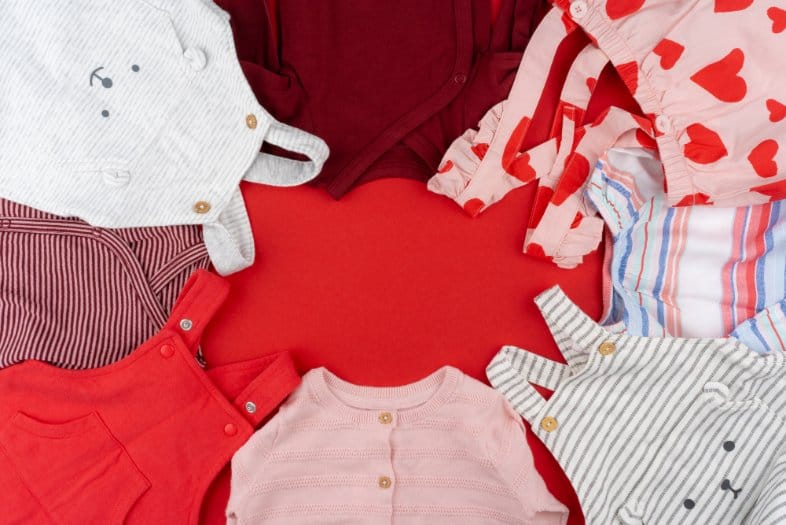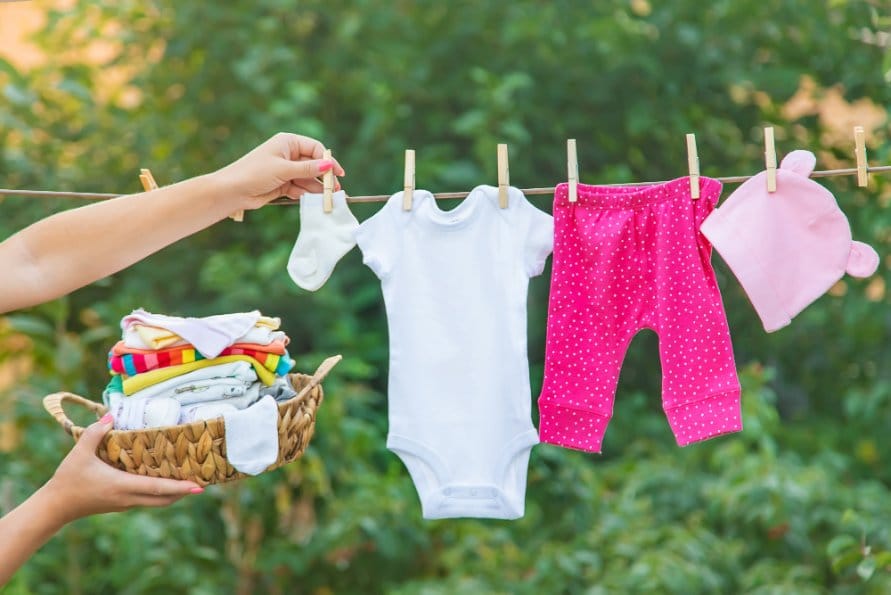Smart solutions for decluttering, donating, selling, and repurposing outgrown children’s clothing while saving money and helping the environment
The Environmental Reality of Clothing Waste
Every decision you make with your toddler’s outgrown clothes impacts our planet’s future
Assessing Your Toddler’s Outgrown Clothes
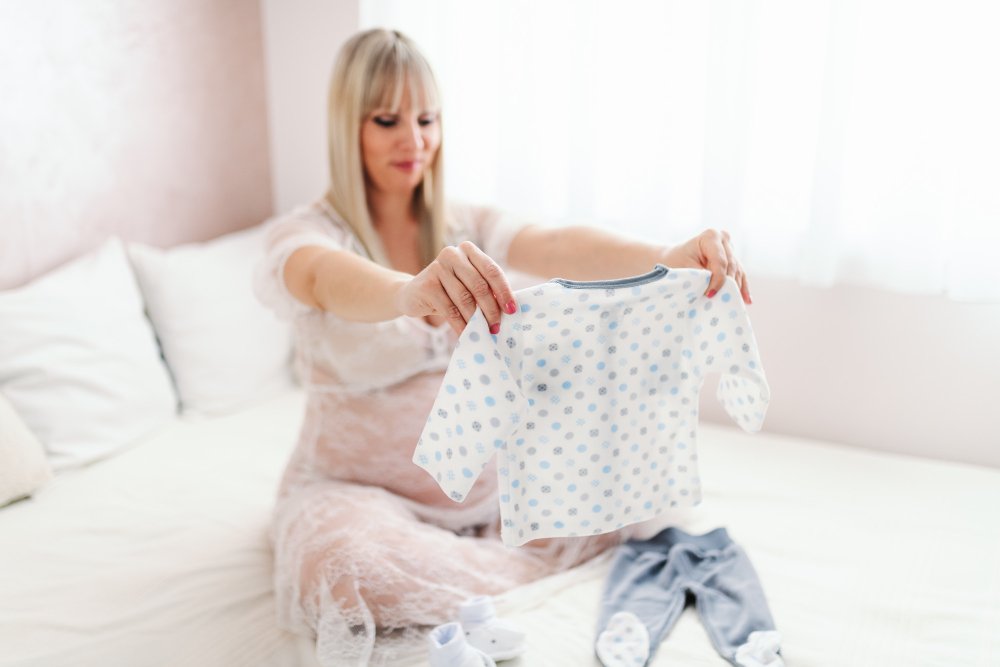
Before deciding what to do with outgrown toddler clothes, take time to carefully evaluate each item. This systematic approach will help you make the best choices for your family and the environment.
Complete Condition Assessment Guide
Start by sorting clothes into clear categories. This method makes the rest of your decisions much easier and more effective.
Your Assessment Checklist:
- Check all seams and stitching for strength
- Look for holes, tears, or thin spots in fabric
- Inspect zippers, buttons, and snaps for proper function
- Test elastic waistbands and cuffs for stretch
- Examine high-wear areas like knees, elbows, and seat
- Check for permanent stains or discoloration
- Smell test for lingering odors
- Note any missing pieces (belts, ties, etc.)
| Condition Category | Description | Best Options |
|---|---|---|
| Excellent | Like new, minimal signs of wear | Sell, donate to premium programs, clothing rental |
| Good | Some wear but structurally sound | Donate, hand-me-downs, community swaps |
| Fair | Visible wear, minor issues | Hand-me-downs, craft projects, play clothes |
| Poor | Damaged, stained, or worn out | Textile recycling, cleaning rags, disposal |
How to Declutter Sentimental Baby Clothes
Some toddler clothes hold special memories that make them hard to part with. Here’s how to handle these emotional decisions:
The Memory Test
Ask yourself these questions for each item:
- Do you have a specific memory attached to this piece?
- Would you be upset if you couldn’t find this item in 5 years?
- Does this represent a major milestone?
Rule: Keep only items that pass all three tests.
The One-Box Method
Limit yourself to one memory box per child. This forces you to choose only the most meaningful pieces.
Photo Documentation
Take photos of special outfits before letting them go. Create a digital memory book that takes no physical space.
Safety & Recall Checks
Before passing clothes to others, verify they meet current safety standards:
Safety Verification Steps:
- Check the Consumer Product Safety Commission (CPSC) website for recalls
- Verify flame retardant compliance on sleepwear
- Ensure drawstrings meet current safety guidelines
- Check for lead in vintage or imported items
- Confirm small parts won’t create choking hazards
Your Decision-Making Guide
Interactive Decision Tree
Cost-Benefit Calculator
Calculate Your Best Financial Option
Modern Solutions: Clothing Rental Services

The biggest trend in 2025 is preventing clothing waste before it happens. Clothing rental services offer a sustainable alternative that many competitors haven’t covered yet.
How Clothing Rental Works
Subscription services like UpChoose, Rent-a-Romper, and Bundlee let you rent high-quality toddler clothes.
Popular Rental Services
- UpChoose: Organic cotton focus, $32-72/month
- Rent-a-Romper: 7-15 pieces per box, premium brands
- Bundlee (UK): Designer brands, happiness guarantee
- Or Collective (UK): Unlimited swaps, £36+/month
When Rental Makes Sense
- Rapid growth spurts
- Special occasions needing dressy clothes
- Limited storage space
- Desire for organic/premium brands
- Environmental consciousness
Pro Tip for Parents: Many rental services also accept your outgrown clothes for credit, creating a complete circular system for your family’s clothing needs.
Donating Toddler Clothes
Learn expert tips for donating clothes effectively and responsibly
Donating remains one of the most impactful ways to extend the life of your toddler’s clothes while helping families in need.
Finding the Right Local Charities
Different organizations serve different needs. Here’s how to match your donations with the right recipients:
| Organization Type | Best For | Special Requirements |
|---|---|---|
| Family Shelters | Immediate needs, all conditions | Clean, seasonal items preferred |
| Goodwill/Salvation Army | General donations, wide reach | Good condition only |
| Religious Organizations | Community-specific needs | Often accept lower-condition items |
| Pregnancy Centers | New parents, baby items | Newborn-12 months priority |
| Day Care Centers | Spare clothes, play wear | Practical items, easy-wash fabrics |
Donation Preparation & Guidelines
Before You Donate:
- Wash all items in appropriate detergent
- Sort by size and season
- Check organization-specific guidelines
- Remove or repair loose buttons and fasteners
- Package in clean bags or boxes
- Include size labels if possible
- Keep donation receipts for tax purposes
Tax Deduction Tip: Donated toddler clothes can be valued at 10-30% of retail price for tax purposes, depending on condition.
Selling Old Toddler Clothes

Selling can help recoup some of your clothing investment while ensuring clothes get continued use.
Online Marketplaces Comparison
| Platform | Best For | Fees | Effort Level | Pros | Cons |
|---|---|---|---|---|---|
| Facebook Marketplace | Local sales, lots | Free | Medium | No shipping, instant payment | Meet-ups required |
| eBay | Designer brands, auctions | 10-13% | High | Wide reach, auction format | Seller fees, shipping hassles |
| Poshmark | Stylish clothes, bundles | 20% | Medium | Easy listing, social features | High fees, $15 minimum |
| Vinted | Casual clothes, international | Buyer pays | Low | No seller fees, easy process | Lower prices, limited US market |
| Mercari | Quick sales, local pickup | 10% | Low | Simple interface, fast sales | Lower visibility than eBay |
Selling Success Tips:
- Bundle strategically: Group items by size or season for faster sales
- Time it right: List spring clothes in late winter, back-to-school items in summer
- Price competitively: Research similar listings before setting prices
- Quality photos: Natural lighting and clean backgrounds increase sales by 40%
- Honest descriptions: Mention any flaws to avoid returns
Consignment Shops & Buy-Back Programs
For parents who prefer less hassle, consignment offers immediate payment with less effort:
Once Upon A Child
National chain specializing in children’s items
Local Consignment Boutiques
Often pay higher percentages for quality items
Online Consignment
Services like thredUP handle everything for you
Selling vs. Donating Calculator
Determine whether selling is worth your time:
Passing Clothes to Others
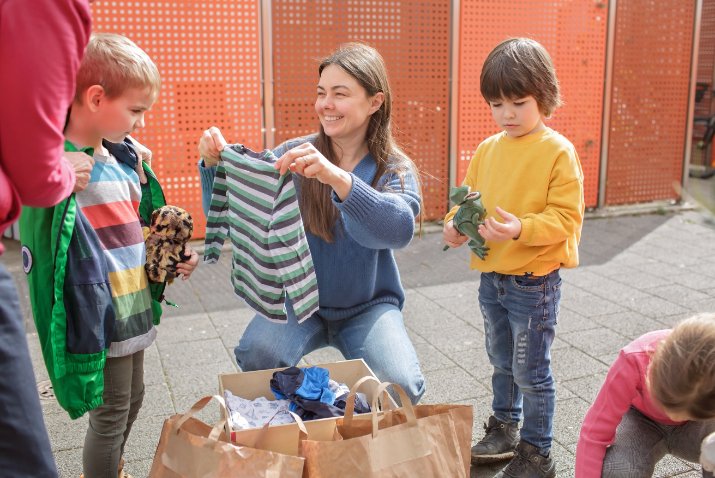
Giving clothes directly to people you know creates personal connections while ensuring items get good use.
Hand-Me-Downs for Family and Friends
The traditional hand-me-down system works well when done thoughtfully:
Hand-Me-Down Best Practices:
- Ask before offering – not everyone wants used clothes
- Sort by size and wash everything first
- Include a note about any special care instructions
- Don’t take it personally if items aren’t used
- Consider the recipient’s style preferences
- Package attractively in clean containers
- Offer to take back unused items
Cultural Considerations: Some families prefer new baby clothes for cultural or personal reasons. Always respect these preferences.
Organizing Community Clothing Swaps
Clothing swaps have become increasingly popular as communities embrace sustainable practices:
Neighborhood Swaps
- Partner with 5-10 families with children of different ages
- Set simple rules: bring clean items, take what you need
- Rotate hosting duties
- Consider seasonal themes
School-Based Swaps
- Partner with your child’s daycare or preschool
- Include teachers who often know families in need
- Time with back-to-school or season changes
- Include shoes and accessories
Online Community Swaps
- Use local Facebook groups or Nextdoor
- Create specific hashtags for your area
- Arrange safe pickup/dropoff locations
- Consider contactless exchanges
Digital Sharing Networks
Modern technology makes sharing easier than ever:
| Platform | Type | Best Features | Safety Tips |
|---|---|---|---|
| Buy Nothing Groups | Local Facebook groups | Hyperlocal, gift economy focus | Meet in public, verify group membership |
| Nextdoor | Neighborhood app | Verified addresses, neighbor connections | Use in-app messaging, trust your instincts |
| Freecycle | Email-based network | Established system, global reach | Email only until meeting, public locations |
| OLIO | Food/item sharing app | Photo sharing, user ratings | Check user profiles, arrange safe meetups |
Creative Reuse & Upcycling Ideas
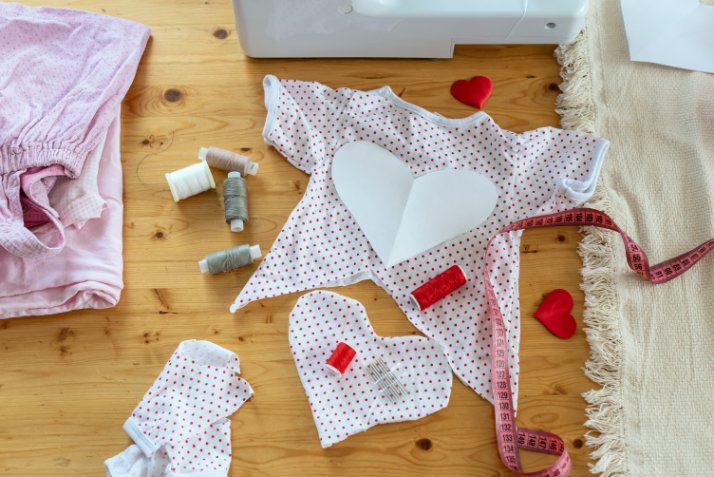
Transform outgrown clothes into new treasures while teaching children about sustainability and creativity.
2025 Upcycling Trends
This year’s popular upcycling movements focus on practical items with sustainable materials:
Patchwork Revival
Mix different fabrics from outgrown clothes into new items:
- Patchwork quilts from favorite outfits
- Tote bags from denim pieces
- Pillow covers from soft shirts
- Wall hangings from colorful fabrics
Sustainable Accessories
Create eco-friendly items for daily use:
- Reusable produce bags from cotton shirts
- Hair accessories from fabric scraps
- Bookmarks from sturdy fabric strips
- Plant pot covers from colorful clothes
Zero-Waste Household Items
Replace disposables with upcycled alternatives:
- Cleaning rags from worn t-shirts
- Reusable snack bags from waterproof materials
- Dish towels from absorbent fabrics
- Pet toys from safe, soft materials
Step-by-Step DIY Projects
Memory Quilt Project
Skill Level: Intermediate | Time: 2-4 hours
Materials Needed:
- 10-20 pieces of meaningful clothing
- Batting material
- Backing fabric
- Basic sewing supplies
- Quilting thread
Instructions:
- Cut clothing into uniform squares (8″x8″ works well)
- Arrange squares in pleasing pattern
- Sew squares together with proper seam allowances
- Add batting and backing layers
- Quilt layers together with straight stitches
- Bind edges for finished look
Fabric Storage Bins
Skill Level: Beginner | Time: 30 minutes
Perfect for organizing:
- Toy storage in playrooms
- Laundry sorting
- Seasonal decoration storage
- Bathroom supplies
Creating Lasting Memory Keepsakes
Transform special outfits into treasures your family will cherish forever:
| Keepsake Type | Best Clothes For | Difficulty | Storage Space |
|---|---|---|---|
| Memory Bears | Soft shirts, pajamas | Intermediate | Small |
| Framed Outfits | First outfits, special occasions | Easy | Wall space |
| Photo Quilts | Various meaningful pieces | Advanced | Medium |
| Pillow Inserts | Favorite shirts | Easy | Small |
Eco-Friendly Recycling & Disposal

When clothes are too worn for donation or reuse, responsible recycling keeps them out of landfills where they would take 200+ years to decompose.
Textile Recycling Programs
Many programs now accept damaged or stained children’s clothing:
Retail Take-Back Programs
- H&M Garment Recycling: Any brand, any condition
- Patagonia Worn Wear: Outdoor clothing focus
- Madewell Denim Recycling: Any brand jeans
- The North Face Clothes the Loop: Any brand clothing
Municipal Programs
Many cities now offer textile recycling bins:
- Check your city’s recycling website
- Look for bins at grocery stores and malls
- Ask about special collection events
- Verify what materials they accept
Mail-In Programs
- TerraCycle: Various brand partnerships
- American Textile Recycling Service: Nationwide pickup
- Planet Aid: Yellow bins in many states
- Cotton’s Blue Jeans Go Green: Denim-specific program
Sustainable Disposal Methods
Why This Matters
Every piece of clothing you recycle instead of throwing away prevents:
Before Recycling:
- Remove all non-fabric elements (buttons, zippers, tags)
- Separate 100% cotton items (these can compost naturally)
- Check if items contain synthetic materials that need special processing
- Clean items if possible, but most programs accept dirty clothes
- Bundle items in clear bags when required
Natural Fabric Composting: Items made of 100% natural fibers like cotton, wool, or linen can actually be composted at home after removing synthetic elements.
Smart Storage Solutions for Future Use
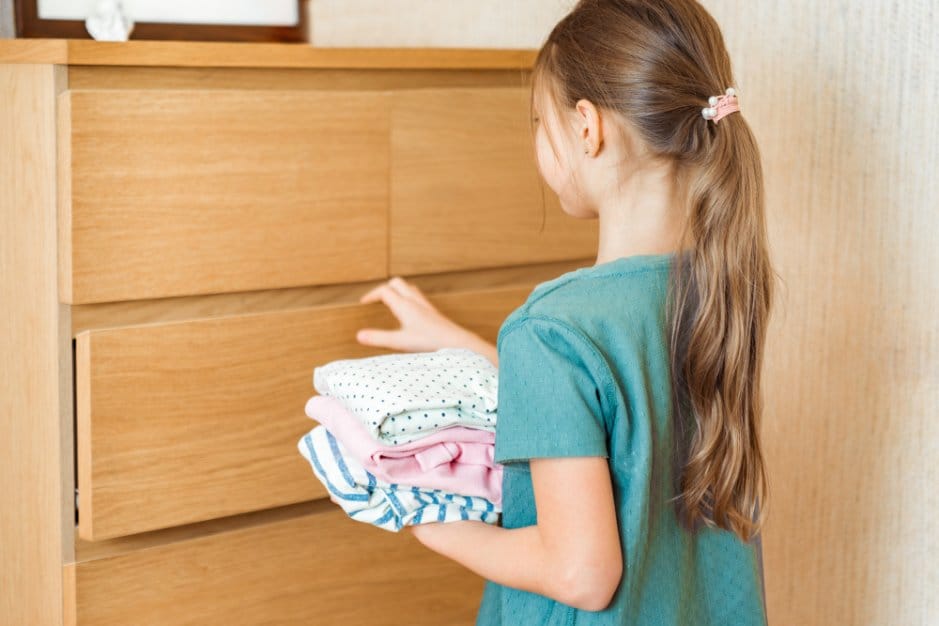
If you’re planning more children or want to save clothes for specific reasons, proper storage ensures they’ll be in good condition when needed.
Size-Progressive System
Instead of storing by specific sizes, organize by growth phases:
- Tiny Phase: 0-6 months
- Mobile Phase: 6-18 months
- Toddler Phase: 18 months-3T
- Preschool Phase: 3T-5T
Climate-Controlled Storage
Essential for long-term storage:
- Use airtight containers with moisture absorbers
- Avoid attics and basements with temperature fluctuations
- Add cedar blocks or lavender sachets for freshness
- Store in cool, dry, dark locations
Digital Inventory System
Track what you have stored:
- Photo each container’s contents
- Use apps like Sortly or Encircle
- Include brand, size, and condition notes
- Set reminders to check stored items annually
| Storage Method | Cost | Space Efficiency | Protection Level | Best For |
|---|---|---|---|---|
| Vacuum Storage Bags | Low | Excellent | Good | Soft items, short-term storage |
| Plastic Storage Bins | Medium | Good | Excellent | Long-term storage, pest protection |
| Cedar Chests | High | Good | Excellent | Heirloom pieces, natural pest deterrent |
| Garment Bags | Medium | Fair | Good | Dressy clothes, wrinkle prevention |
Frequently Asked Questions
Most parents choose a combination of approaches: donating clothes in good condition to local charities or shelters, selling valuable items online or through consignment shops, passing hand-me-downs to friends and family, and keeping a few special pieces as keepsakes. In 2025, many parents are also exploring clothing rental services to prevent accumulation altogether.
Don’t let clothes sit for more than 6 months after your child outgrows them. The longer you wait, the more likely you are to forget what you have, and seasonal items may miss their optimal donation or selling windows. Set a bi-annual schedule (spring and fall) to sort through outgrown clothes.
For many families, yes. If you typically spend $200+ per year on toddler clothes, rental services costing $400-850 annually can provide access to premium organic brands worth $1000+ retail. You also save on storage space and eliminate the hassle of disposal. It works best for families with rapidly growing children or those who prioritize sustainable, high-quality clothing.
From most to least environmentally friendly: 1) Clothing rental/sharing (prevents new production), 2) Hand-me-downs and donations (extends life), 3) Upcycling and creative reuse, 4) Textile recycling programs, 5) Composting natural fibers, 6) Regular trash disposal (worst option – takes 200+ years to decompose and releases methane).
Use the “one box rule” – limit yourself to one memory box per child. Take photos of special outfits before letting them go, and consider creating one meaningful keepsake like a memory bear or small quilt from your most treasured pieces. Focus on keeping items tied to specific memories rather than clothes you just think are cute.
Don’t throw them away! Many textile recycling programs accept damaged items. You can also use them for craft projects, cleaning rags, or pet bedding. If they’re made of 100% natural fibers, you can compost them after removing synthetic elements like buttons and zippers.
Sell if: clothes are from premium brands, in excellent condition, you have time to manage listings, and potential earnings exceed $2-3 per hour of effort. Donate if: you want immediate decluttering, items are from mainstream brands, you prefer the tax deduction, or supporting your community is more important than income.
Conclusion
Your Action Plan for Sustainable Toddler Clothing Management
Managing outgrown toddler clothes doesn’t have to be overwhelming when you have a clear system. The choices you make today impact both your family’s budget and our planet’s future.
🌟 Top Recommendations for 2025:
- Consider clothing rental services for your next child to prevent accumulation from the start
- Establish a bi-annual sorting routine (spring and fall) to stay ahead of the clutter
- Prioritize donation and sharing over disposal to extend clothing life cycles
- Keep the environmental impact in mind – every item diverted from landfills makes a difference
- Document special memories with photos before letting sentimental pieces go
💰 Financial Impact Summary:
- Selling: Can recoup 20-40% of original value for premium brands in excellent condition
- Donating: Provides tax deductions worth 10-30% of retail value
- Rental Services: Save up to 80% compared to buying new premium clothes
- Hand-me-downs: Help friends/family save $200-500 annually on clothing
🌍 Environmental Benefits:
By following this guide, you’re contributing to a more sustainable fashion future. Every piece of clothing you keep out of landfills prevents:
- 200+ years of decomposition time
- Methane gas emissions from organic materials breaking down
- Chemical leaching into soil and groundwater
- The need for new resource-intensive clothing production
🎯 Your Next Steps:
- Assess what you currently have using our condition guide
- Choose 2-3 disposal methods that fit your lifestyle and values
- Set up systems for ongoing clothing management as your child grows
- Consider future prevention through rental services or buying strategies
- Share this guide with other parents in your community
Remember: There’s no single “right” way to handle outgrown clothes. The best approach combines methods that work for your family’s schedule, values, and circumstances. What matters most is making conscious choices rather than defaulting to the trash bin.
🔄 Creating a Sustainable Cycle:
The ultimate goal is creating a circular system where clothes serve multiple families before reaching end-of-life. Whether through rental services, community sharing, or careful donation practices, you’re part of a growing movement toward sustainable parenting.
By implementing even a few strategies from this guide, you’re making a meaningful difference for your family’s finances, your community’s well-being, and our planet’s future. Every small action contributes to the larger goal of reducing textile waste and creating a more sustainable world for our children.
Join the Movement
Share your success stories and connect with other eco-conscious parents. Together, we can transform how families think about children’s clothing and create lasting positive change.
Questions about sustainable clothing management?
Explore more guides on sustainable fashion trends and clothing reuse strategies.
Sources & Additional Reading
- EPA Textiles: Material-Specific Data – Official US Environmental Protection Agency textile waste statistics
- European Parliament: Environmental Impact of Textile Production – Comprehensive analysis of fashion industry environmental effects
- Earth.Org: Fast Fashion Waste Statistics – Current data on textile waste and environmental impact

